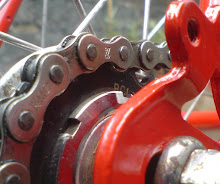Time for a bit of self-doubt.
Although I do believe that we can make a reasonable estimate of sustainable levels of resource use and waste production is not only reasonably estimable, and can be made more accurately with time, I sometimes wonder what level of sustainability we’re aiming for.
While sustainability is simple in principle, everything has an almost indefinite impact. At least, anything that hasn’t evolved as part of a self-contained ecosystem. And that doesn’t include us.
The example I gave in my first blog was of a wood being forested. Trees will grow to maturity in a predictable period of time, so you can take a number of trees every year, re-seeding to keep the canopy close to full at all times. But that barely begins to explain a sustainable wood.
Mature trees (even sycamores) play host to a variety of animals, birds, insects and other plant species. Removing mature trees destroys habitat and a portion of the ecosystem. Some species take longer to recover or can withstand less perturbation than others. So, while the trees will manage a replacement rate of, say, one tree per year per hundred, a particular species of moss might only manage to re-grow at 0.1% or 0.01% per year.
Where does that leave our calculations? If we forest this wood with the health of the moss—in other words, its sustainability—in mind, we can only take one tree in every hundred, every ten or one hundred years. I’m serious.
A couple of answers spring to mind.
The deep green response is that we need to follow this process to its natural conclusion: that the human population and the way it exists have to be pared back to a level where no species will be pushed to extinction anywhere in the world by human action.
Is that absurd? Yes and no. It should be possible, with almost the present human population, to live without destroying any more species. It would mean avoiding the most sensitive parts of the globe, in large part. Setting aside the most delicate ecosystems as no-go areas. But we already survive without them.
Which brings me to another solution to the sustainability riddle. We decide on “acceptable” levels of sustainability. As we progress towards total sustainability, we do not simply reduce our impact everywhere and in every way. For one thing, that would be impractical. For another, it would be too crude.
Shutting down coal-fired power stations is all-well-and-good but is unlikely to be matched with a reduction in energy use. The gap between generation and use could be bridged by new renewable sources, but those have an impact too.
The solution has to be a managed transition, sacrificing some ecosystems and risking the loss of some species, relying on the durability of the global ecosystem to withstand a little more pain. What we get in the end is an ecosystem of ecosystems that is going to endure.
Are we happy with that? It could be argued that we should then progress towards ecosystems more like those we had before the rise of humanity. And that would be deepest green.


No comments:
Post a Comment